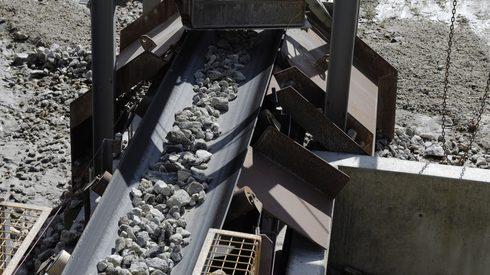Since 2019, China has been seeing a large amount of its power batteries entering their retirement period with volumes of such material growing rapidly.
According to estimates by the Ministry of Ecology and Environment (MEE), the total amount of retired lithium batteries will reach 134.49 Gigawatt hours (GWh) in 2025. In 2022, the volume was 52.29 GWh.
In 2023, the majority of scrap batteries were from China and Europe, with China accounting for 57% and Europe for 20%, according to Fastmarkets’ battery recycling analyst Julia Harty.
The Chinese government has already recognized the importance of battery recycling in promoting the country’s decarbonization plan.
“Apart from decarbonization, battery recycling will also help reduce China’s reliance on cobalt, lithium and nickel imports. It would mean more stability in the supply chain of these strategic materials,” Deng Yi from the MEE said during a battery recycling event held in Shanghai in October 2023.
Fastmarkets forecasts that by 2033, 13% of metal supply will come from battery recycling, while in 2023, the percentage of recycled metals in total metal supply was 5%.
Battery recycling whitelist
China’s Ministry of Industry and Information Technology (MIIT) has set up a whitelist for the battery recycling industry to denote which companies are considered by authorities to be acceptable and trusted.
But the trustworthiness of the list has been challenged by many market participants due to lack of clarity in its standards, Fastmarkets heard.
The whitelist consists of recyclers which are compliant of the Industry Standard for Comprehensive Utilization of Waste Power Batteries of New Energy Vehicles. To get on the list, one of the key criteria is for a recycler to achieve a recovery rate of 98% for nickel and cobalt, and 85% for lithium.
The fifth batch of the whitelist was published in November 2023, adding 68 companies, and bringing the total number to 156.
“The advantage of this list is that it shows that these companies are recognized by the government. Major international OEMs (original equipment manufacturers) prefer to form partnerships with white-listed companies,” a source at a major China battery raw materials producer told Fastmarkets.
“The government is working hard to set a universal standard for the recycling industry. This whitelist is one of their tools. But it is going to be very challenging as this industry is still dominated by small workshops. The white-listed companies only account for about 25% of the market share,” Li Chongyang of Minmetals Lihuitong said in a panel discussion during Fastmarkets’ China battery raw materials event in December 2023.
Still, some market participants complained that the number of whitelisted companies is rising too quickly because the standards to get on the list still lack details.
Currently, the safety and environmental requirements differ region to region for a company to qualify for the whitelist. Taxation policies also need to be more comprehensive, according to Wang Dechuang from the Waste Battery Branch of the China National Resource Recycling Association (CRRA).
It is a common view among sources that the authority should prioritize setting up clearer and uniform standards across the country for battery recycling and second-life battery usage.
Challenges in the Chinese recycling industry
Overcapacity has become a major challenge in the Chinese battery recycling industry, and small workshops are squeezing the market share of those white-listed companies, according to sources.
“More and more recycling capacity is being planned, but the scrap batteries are in short supply,” Wang said.
“Smaller firms which do not have strict ESG (environmental, social, and corporate governance) goals can give much more competitive quotations when acquiring scrap batteries because their processing cost can be lower. They are squeezing the market share of white-listed companies which are following more stringent ESG standards,” a second source at the same battery materials producer firm told Fastmarkets.
Many recyclers are trying to promote their operating efficiency by having more automated production lines. But the number of battery suppliers has been increasing exponentially in recent years, which makes a fully automated line for battery dismantling almost impossible due to structural differences between batteries.
“We can’t change the programming of the dismantling line every time a different battery comes in. This means that dismantling of waste batteries still depends on human labor with current technology,” the second battery materials source said.
The US Inflation Reduction Act (IRA) also poses more barriers in doing international business.
“To comply with the IRA, more and more OEMs need the recyclers to be local, which means if a recycling company wants to do business with them, they need to set up plants wherever this potential OEM is. This increases the cost and time frame of a project significantly,” the same source told Fastmarkets.
Want more insights and forecasts for the battery recycling and black mass market?
Keep up to date with global market insights and predictions for the battery recycling market with the Fastmarkets Battery Recycling Outlook.






